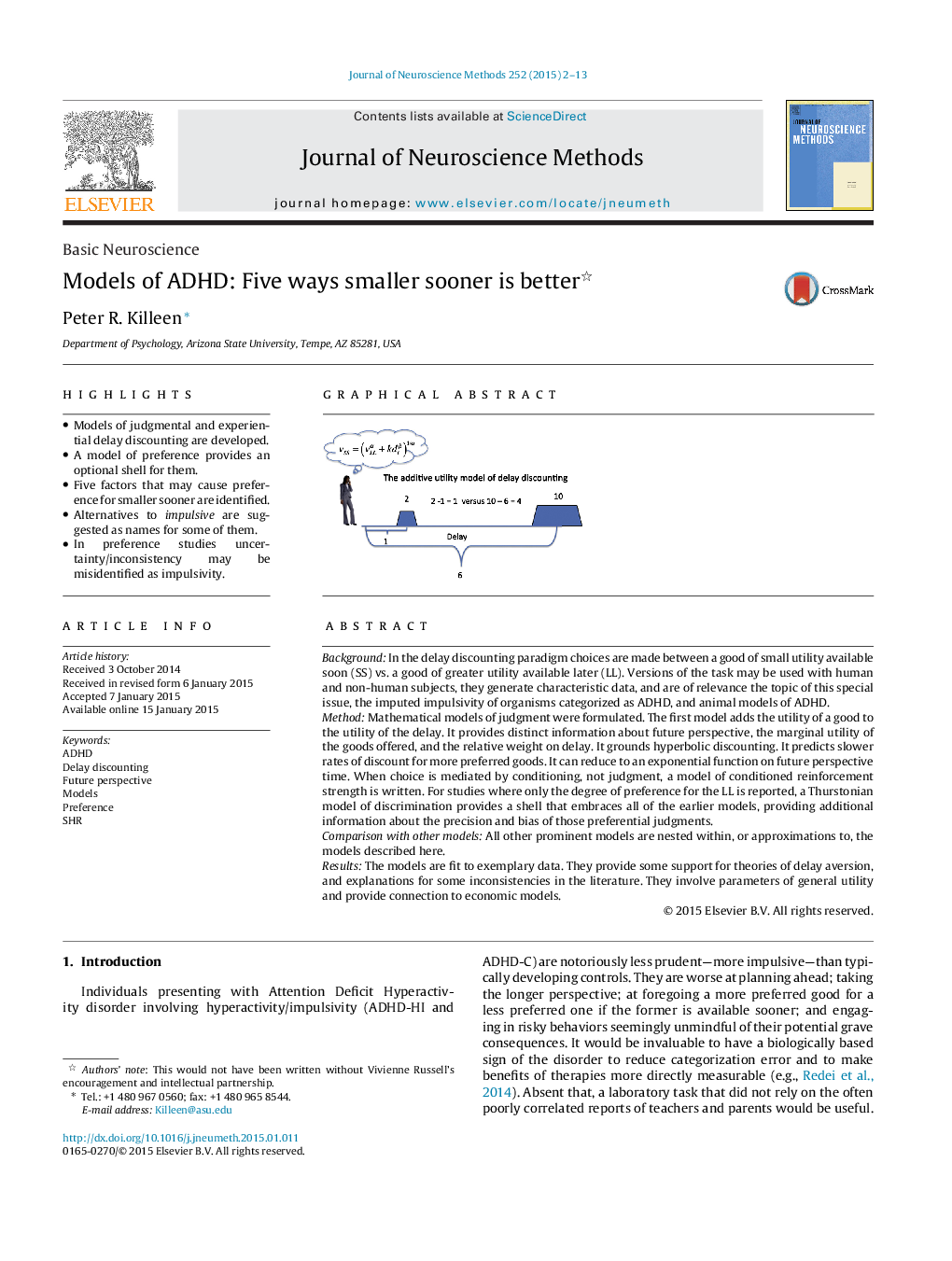| کد مقاله | کد نشریه | سال انتشار | مقاله انگلیسی | نسخه تمام متن |
|---|---|---|---|---|
| 4334901 | 1614617 | 2015 | 12 صفحه PDF | دانلود رایگان |

• Models of judgmental and experiential delay discounting are developed.
• A model of preference provides an optional shell for them.
• Five factors that may cause preference for smaller sooner are identified.
• Alternatives to impulsive are suggested as names for some of them.
• In preference studies uncertainty/inconsistency may be misidentified as impulsivity.
BackgroundIn the delay discounting paradigm choices are made between a good of small utility available soon (SS) vs. a good of greater utility available later (LL). Versions of the task may be used with human and non-human subjects, they generate characteristic data, and are of relevance the topic of this special issue, the imputed impulsivity of organisms categorized as ADHD, and animal models of ADHD.MethodMathematical models of judgment were formulated. The first model adds the utility of a good to the utility of the delay. It provides distinct information about future perspective, the marginal utility of the goods offered, and the relative weight on delay. It grounds hyperbolic discounting. It predicts slower rates of discount for more preferred goods. It can reduce to an exponential function on future perspective time. When choice is mediated by conditioning, not judgment, a model of conditioned reinforcement strength is written. For studies where only the degree of preference for the LL is reported, a Thurstonian model of discrimination provides a shell that embraces all of the earlier models, providing additional information about the precision and bias of those preferential judgments.Comparison with other modelsAll other prominent models are nested within, or approximations to, the models described here.ResultsThe models are fit to exemplary data. They provide some support for theories of delay aversion, and explanations for some inconsistencies in the literature. They involve parameters of general utility and provide connection to economic models.
Figure optionsDownload as PowerPoint slide
Journal: Journal of Neuroscience Methods - Volume 252, 30 August 2015, Pages 2–13